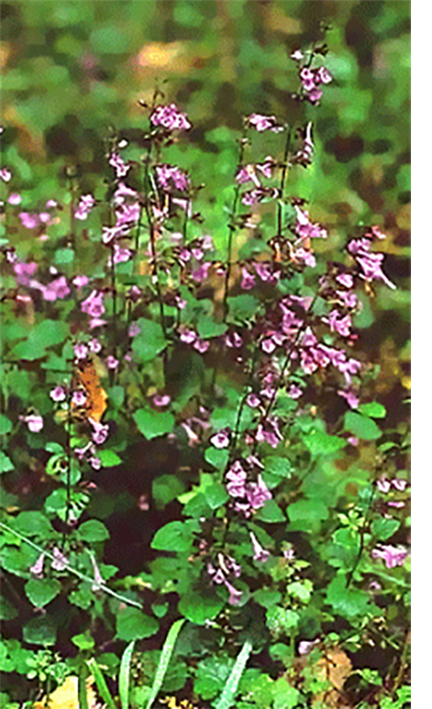 Calamint
Calamintha
sylvatica,
plant in flower..
Calamint
Calamintha
sylvatica,
plant in flower..
Welcome to the summary page for FabulousFusionFood's Herb guide to Calamint along with all the Calamint containing recipes presented on this site, with 2 recipes in total.
e This is a continuation of an entire series of pages that will, I hope, allow my visitors to better navigate this site. As well as displaying recipes by name, country and region of origin I am now planning a whole series of pages where recipes can be located by meal type and main ingredient. This page gives a listing of all the Cornish recipes added to this site.
These recipes, all contain Calamint as a major herb flavouring.
Calamint, Calamintha sylvatica syn Calamintha officinalis subsp sylvatica (also known as Mountain Balm, Common Calamint) is a perennial herb of the Lamiaceae (mint) family. It is a native of Western Europe, the Mediterranean and North Africa which grows to about 60cm in height and bears oval opposed toothed leaves all the way up the stem. It bears pink flowers between July and September which develop at the leaf axis.
The leaves of this herb are mint scented and make a refreshingly sweet and aromatic herb tea. The leaves can also be used as a flavouring in cooked dishes and bear a distinct flavour that is somewhat like a cross between mint and marjoram. As such it goes well with lamb dishes and tomato-based sauces.
e This is a continuation of an entire series of pages that will, I hope, allow my visitors to better navigate this site. As well as displaying recipes by name, country and region of origin I am now planning a whole series of pages where recipes can be located by meal type and main ingredient. This page gives a listing of all the Cornish recipes added to this site.
These recipes, all contain Calamint as a major herb flavouring.
Calamint, Calamintha sylvatica syn Calamintha officinalis subsp sylvatica (also known as Mountain Balm, Common Calamint) is a perennial herb of the Lamiaceae (mint) family. It is a native of Western Europe, the Mediterranean and North Africa which grows to about 60cm in height and bears oval opposed toothed leaves all the way up the stem. It bears pink flowers between July and September which develop at the leaf axis.
The leaves of this herb are mint scented and make a refreshingly sweet and aromatic herb tea. The leaves can also be used as a flavouring in cooked dishes and bear a distinct flavour that is somewhat like a cross between mint and marjoram. As such it goes well with lamb dishes and tomato-based sauces.
The alphabetical list of all Calamint recipes on this site follows, (limited to 100 recipes per page). There are 2 recipes in total:
Page 1 of 1
| Orecchiette with Mushroom Sauce Origin: Italy | Tagliatelle with Lucanian Sausage and Porcini Origin: Italy |
Page 1 of 1